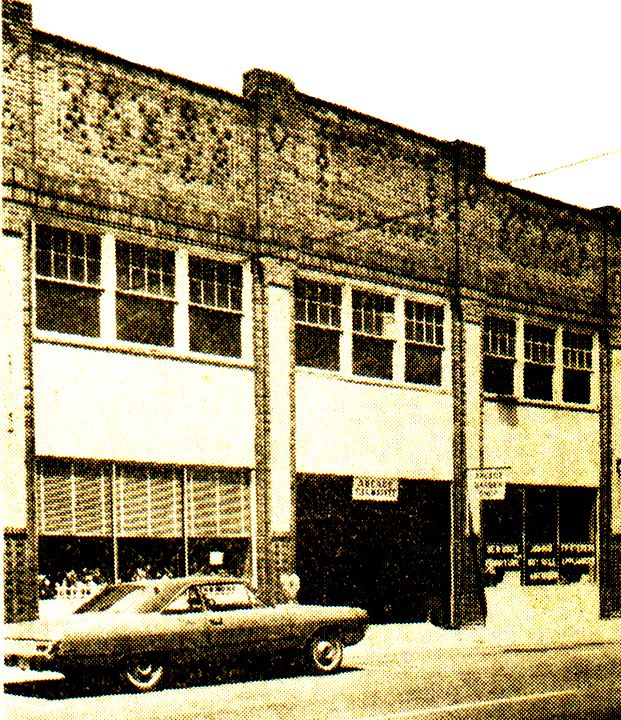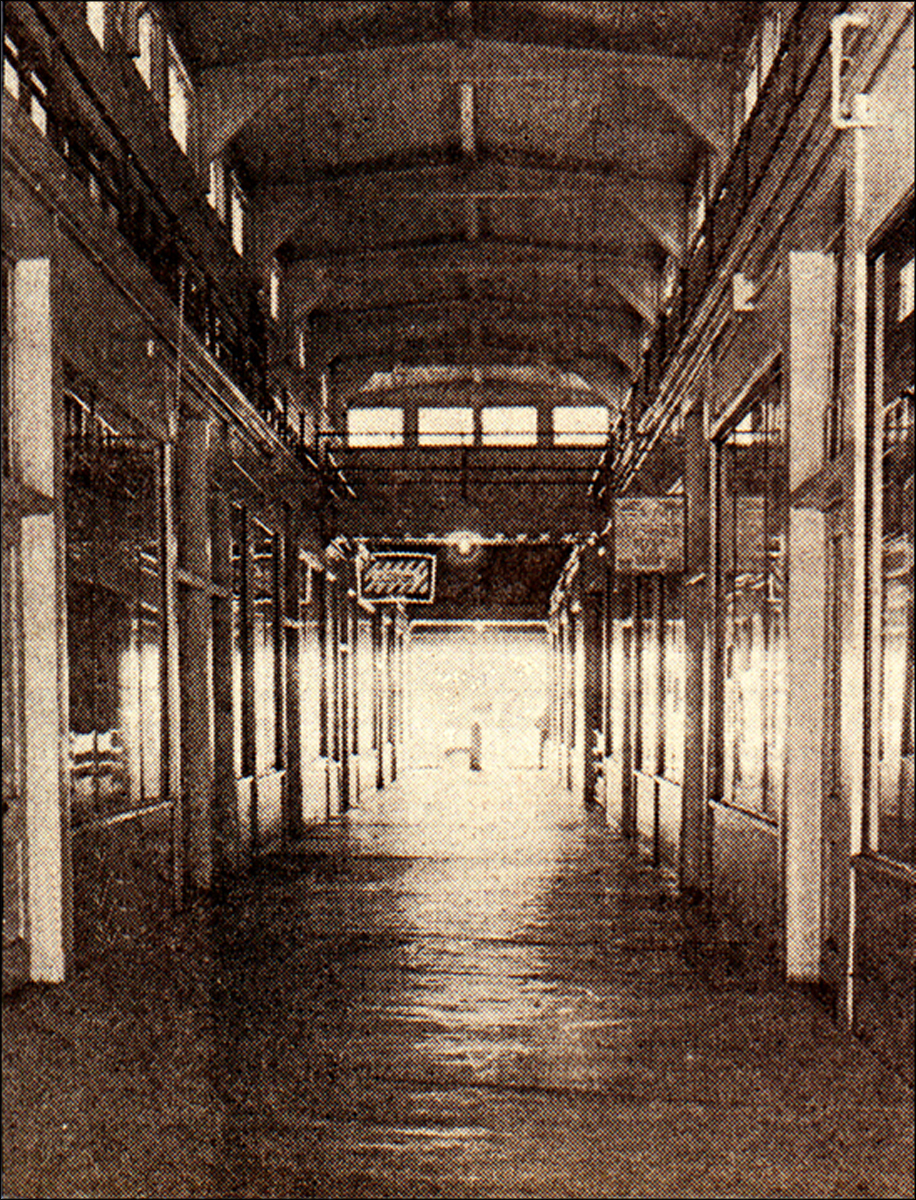The much-anticipated new ultra-modern Penney’s department store opened its doors at 305 E. Main Street in August 1948. The business moved from 240 E. Main, which later became the residence of Nettie Lee Ladies Shop.
Penney’s took over a site previously occupied by the Maryland Beauty Salon, The Hat Box, Sam’s Haberdashery, the Orchid Beauty Shoppe and the Avalon Apartments. Mac and George Langford, sons of Penney’s new store manager, Norris Langford and his wife, Sarah, provided some interesting facts about the new facility.
According to Mac, James Cash Penney developed a marketing strategy in 1902 when he opened his first store in Wyoming: “It was named the ‘Golden Rule’ store and was aimed at small towns of 10,000 to 15,000 as a cash and carry retail outlet. No credit or charging was permitted.” Mac fondly remembers his mother taking her two young boys downtown to watch the construction of the 36,564 square feet facility, the product of Abernathy Architectural Firm and J.E. Green Construction Company: “We would stand on the sidewalk at Kings department store to see the steel workers throw red hot rivets up two stories and hammer them into place.”
George Langford added: “It was the first of the 1,600 stores at that time to drop the J.C. Penney Co. logo and black and yellow signage and use just ‘Penney's.’” After opening speeches and a ribbon cutting ceremony, the two Langford siblings pulled back the curtains of the Main street entrance, allowing patrons their first view of the impressive store. Mac said the event received full media exposure: “WETB radio covered the opening ceremonies and interviewed department heads and customers during three half-hour ‘public interest’ broadcasts that day.”
The announcers were well known area personalities: Harry Snook, Herb Howard, Bill Shell, Stan Barron, Alice Friberg and Fred Lockett. One of the first people interviewed was Jenny Sells, the longest working Penney’s employee of Johnson City, having been employed with the firm since 1923. Throughout the opening day, Mrs. Clarence Ring, long-time organist for Central Baptist Church, played songs on the Hammond organ from the mezzanine level, commencing with the very beautiful “My Tennessee, My Tennessee.”
The store consisted of three and a half floors: street floor (ladies’ accessories, candy, jewelry, cosmetics, men’s and boys’ furnishings and dress shoes), mezzanine floor (infants’ and girls’ wear), second floor (women’s apparel, foundation garments, millinery, gowns, slips and the cotton shop) and downstairs (work clothing, work shoes, piece goods, notions and home furnishings). The prices were a reflection of the times: men's waistband overalls- $2.49, suits- $10.00, dress shoes- $6.90, dress shirts- $2.98, ladies' nylon hose- $0.98, cotton dresses- $2.00, fall coats- $24.75, children's shoes- $3.98, dungarees- $1.59 and sheets- $1.67.
The front entrance consisted of six thermo-pane 200-pound doors, installed by Holston Glass of Kingsport; the back entrance had four. The air was cooled every six and a half minutes by an air conditioning system, utilizing a huge water-cooling tower on the roof. An unusual six-inch pool of water across the entire roof provided year-round insulation.
The store had two adjacent high-speed, self-leveling, operator-driven elevators. A third person, identified as Mrs. Miller, served as elevator hostess. Should one elevator inadvertently stop during transit, the other could be deployed alongside it, allowing stranded passengers to pass through interconnecting doors from one unit to the other. George said the self–service elevators had attendants much of the time because “Dad thought it was more convenient for the customers who were not used to manning the elevators themselves.”
The flooring of the downstairs and main floors was terrazzo (marble chips on concrete). The balcony and third floors had ice blue, fatigue proof carpet. Modern ‘theatrical lighting” was deployed throughout the store to add visual effects for promotional events. There were 28 fitting rooms. The second floor ladies’ apparel rooms were quite luxurious for the time, utilizing three-way adjustable full-length mirrors.
Mac described Penney’s unique method for identifying sale items: “Most marked down special event merchandise had a price ending in “88”, such as $5.88.” Just prior to opening day, Mr. Langford went to Hamilton National Bank to obtain a supply of shiny new coins (half dollars, quarters, dimes, nickels and, of course, pennies) to be used for making change.
The store employed an “auto call” xylophone chime system for paging key personnel. The number of chimes specified the person being summoned; for example, Mr. Langford’s call was one chime. Mac was amazed at the store’s massive labor force, employing between 64 and 106 workers, depending on the anticipated crowd.
Penney’s used the suction tube system prevalent in department stores of that era. If a sales clerk needed extra cash or a customer receipt, he or she put money or a sales slip into a tube, placed it in the suction pipe and sent it to the main cashier on the mezzanine level. The person at the other end would fill the request, put it back in a tube, insert it in the suction pipe and return it to the appropriate counter. The merchandise was then wrapped in brown paper, tied with a string and handed to the customer.
According to Mac, the store did something unheard of today: “Merchandise could be taken out of the store ‘on approval’ without paying for it.” He further commented: “Ladies back then wore corsets, and the foundation department had a professional corsetiere who could fit any female shape known to exist. “The store also had an alterations department with two large steam pressing machines, which could press men’s suits, felt hats, pants and ladies dresses after alterations while the customer waited.” Patrons could sit at their leather padded glove-fitting counter and have an expert fit them with just the right gloves.
Mac once served as an after-school roving store “detective,’” being on the lookout for shoplifters. His role was to stand on the mezzanine and report any suspicious persons to the store’s security person.
Mac recalled the occasion when Mr. Penney visited their home in Johnson City. The top executive was traveling with his valet from New York and wanted to stop by and visit his new store. Norris secured reservations for them at the John Sevier Hotel. Just two hours prior to their arrival, the New York office called and informed him that Mr. Penney wanted to stay at the Langford house. Norris met them at the train station, astutely tipped their baggage handler and escorted his important guests to his home. At Mr. Penney’s insistence, they ate breakfast promptly at seven the next morning, walked around the neighborhood at eight and were downtown ready to enter the new store punctually at nine.
During Norris Langford’s 21-year tenure as manager of Penney’s, he once served as director of the Johnson City Chamber of Commerce. After managing the new store for ten years, he was transferred in 1958 to another Penney’s store in Madisonville, Kentucky. Over time, the downtown area became a financial burden on the store’s operation. They moved to the Johnson City Mall on N. Roan Street in 1990.
Thanks to Mac and George Langford, we have been afforded a nostalgic look at a once bright spot in Johnson City’s business history.





